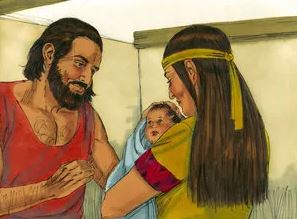Amram is a significant yet often lesser-known figure in the Bible, particularly within the Old Testament. His role is pivotal in the genealogical and narrative history of the Israelites. This article delves into Amram’s life, his family background, and his impact on biblical history, offering a detailed and engaging overview that caters to those seeking to understand his importance.
Who Was Amram?
Amram is a biblical character mentioned primarily in the Old Testament. He was a Levite from the tribe of Levi and is notable for being the father of Moses, Aaron, and Miriam. His life and lineage are crucial to understanding the genealogical context of the Israelites.
- Genealogical Significance:
- Lineage: Amram was the son of Kohath and a descendant of Levi, one of the twelve sons of Jacob. This places him within the Levitical priesthood, a crucial aspect of Israelite religious and social structure.
- Family: Amram’s wife was Jochebed, and together they had three significant children: Moses, Aaron, and Miriam. Each of these children played a critical role in the history of the Israelites.
- Biblical References:
- Exodus 6:20: Amram is first introduced in the Book of Exodus, which details his lineage and his role as the father of Moses and Aaron. This verse highlights the importance of his family in the broader narrative of Israelite history.
- Numbers 3:19: In the Book of Numbers, Amram’s descendants are noted among the Levites, underscoring their role in the religious and priestly functions of the Israelite community.
Amram’s Role in Biblical History
Amram’s role, while not extensively detailed in the scriptures, is integral to the narrative of the Exodus and the formation of the Israelite nation.
- Family and Legacy:
- Moses: As the father of Moses, Amram’s role is indirectly significant in the story of the Exodus. Moses, who led the Israelites out of Egypt, was born to Amram and Jochebed during a period of intense oppression. His leadership and the events of the Exodus are central to the Jewish, Christian, and Islamic traditions.
- Aaron: Amram’s son Aaron was appointed by God to be the first High Priest of Israel. His role in the religious life of the Israelites, including his participation in the Exodus and the establishment of the Tabernacle, was crucial.
- Miriam: Amram’s daughter Miriam is recognized as a prophetess and played a key role in the events of the Exodus. She is known for leading the women of Israel in song and dance after the crossing of the Red Sea.
- Significance in the Exodus Narrative:
- Context: Amram’s family lived during a period of great hardship for the Israelites. The narrative of their lives is intertwined with the broader story of Israel’s liberation from Egyptian bondage.
- Covenant and Leadership: The leadership and prophetic roles of Amram’s children underscore his significance in the covenantal history of Israel. His family’s contributions were foundational to the establishment of Israel as a nation under God.
Historical and Cultural Impact
Amram’s influence extends beyond the biblical text, impacting religious traditions and interpretations across different cultures.
- Religious Traditions:
- Judaism: In Jewish tradition, Amram’s family is revered for their pivotal roles in the Exodus and the establishment of religious practices. The story of Amram and his children is integral to understanding the Levitical priesthood and the religious heritage of the Jewish people.
- Christianity: For Christians, Amram’s significance is closely tied to the story of Moses and the fulfillment of Old Testament prophecies. The New Testament often refers back to the Old Testament figures, including those from Amram’s lineage, to provide context for the teachings of Jesus.
- Islam: In Islam, Amram is recognized as Imran, and his family, including Moses (Musa), is respected. The story of Musa and his family is significant in Islamic tradition, reflecting the shared heritage among the Abrahamic faiths.
- Cultural References:
- Art and Literature: Amram’s legacy has inspired various works of art and literature throughout history. His role as the father of Moses, Aaron, and Miriam has been depicted in numerous religious artworks, including paintings, sculptures, and manuscripts.
- Educational Context: The study of Amram’s life is important in biblical scholarship and religious education. His family’s impact on Israelite history is a key topic in understanding the broader narrative of the Old Testament.
Amram may not be a central figure in the biblical narrative, but his role as the father of Moses, Aaron, and Miriam places him at the heart of one of the most significant periods in Israelite history. His lineage and the contributions of his children are foundational to the religious and cultural heritage of Judaism, Christianity, and Islam.
Understanding Amram’s place in history provides valuable insights into the genealogical and religious context of the Old Testament. His legacy, though often overshadowed by the accomplishments of his children, remains a crucial part of the narrative that shaped the course of biblical history.
